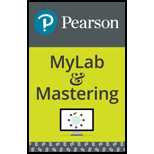
Concept explainers
(a)
Interpretation:
Whether a metric ruler gives a continuous or a quantized measurement of length is to be stated.
Concept introduction:
Quantum theory was proposed by Max Planck in
(b)
Interpretation:
Whether a digital laser gives a continuous or a quantized measurement of length is to be stated.
Concept introduction:
Quantum theory was proposed by Max Planck in
Want to see the full answer?
Check out a sample textbook solution
Chapter 4 Solutions
EP INTRODUCTORY CHEM.-MOD.MASTERINGCHEM
- State the postulates of quantum mechanics introduced throughout the chapter in your own words.arrow_forwardDraw the electromagnetic (EM) spectrum indicating the relative locations of the various EM waves. (b) Red light has a wavelength of 725 nm. What is the frequency (unit)arrow_forwardOutcome • Demonstrate a working knowledge of the Bohr model in determining orbital radii and energy levels for electrons. (Outcome 1) Apply the quantum numbers to analyze the electron configurations for any atom, and relate the structure of the Periodic Table with Pauli's exclusion principle. (Outcome 2) • Explore x-ray production and the properties of a laser. (Outcome 3)arrow_forward
- Calculate the following values and indicate what type of electromagnetic radiation is present. (a) Energy for 635 nm light (b) Frequency for 3.50 um lightarrow_forwardWhat feature of an orbital is related to each of the following?(a) Principal quantum number (n)(b) Angular momentum quantum number (l)(c) Magnetic quantum number (ml)arrow_forwardWhich of the following is true for both an orbit and an orbital? (Sec. 4.11) (a) An orbit and an orbital always contain two electrons. (b) An orbit and an orbital can be described as elliptical. (c) An orbit and an orbital represent an electron boundary. (d) An orbit and an orbital represent a fixed energy state. (e) all of the abovearrow_forward
 Chemistry & Chemical ReactivityChemistryISBN:9781337399074Author:John C. Kotz, Paul M. Treichel, John Townsend, David TreichelPublisher:Cengage Learning
Chemistry & Chemical ReactivityChemistryISBN:9781337399074Author:John C. Kotz, Paul M. Treichel, John Townsend, David TreichelPublisher:Cengage Learning Chemistry & Chemical ReactivityChemistryISBN:9781133949640Author:John C. Kotz, Paul M. Treichel, John Townsend, David TreichelPublisher:Cengage Learning
Chemistry & Chemical ReactivityChemistryISBN:9781133949640Author:John C. Kotz, Paul M. Treichel, John Townsend, David TreichelPublisher:Cengage Learning Introductory Chemistry: An Active Learning Approa...ChemistryISBN:9781305079250Author:Mark S. Cracolice, Ed PetersPublisher:Cengage Learning
Introductory Chemistry: An Active Learning Approa...ChemistryISBN:9781305079250Author:Mark S. Cracolice, Ed PetersPublisher:Cengage Learning Physical ChemistryChemistryISBN:9781133958437Author:Ball, David W. (david Warren), BAER, TomasPublisher:Wadsworth Cengage Learning,
Physical ChemistryChemistryISBN:9781133958437Author:Ball, David W. (david Warren), BAER, TomasPublisher:Wadsworth Cengage Learning, Living By Chemistry: First Edition TextbookChemistryISBN:9781559539418Author:Angelica StacyPublisher:MAC HIGHER
Living By Chemistry: First Edition TextbookChemistryISBN:9781559539418Author:Angelica StacyPublisher:MAC HIGHER World of Chemistry, 3rd editionChemistryISBN:9781133109655Author:Steven S. Zumdahl, Susan L. Zumdahl, Donald J. DeCostePublisher:Brooks / Cole / Cengage Learning
World of Chemistry, 3rd editionChemistryISBN:9781133109655Author:Steven S. Zumdahl, Susan L. Zumdahl, Donald J. DeCostePublisher:Brooks / Cole / Cengage Learning





